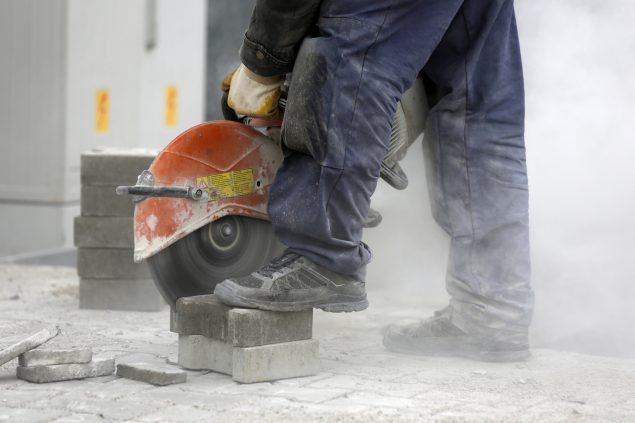
The Occupational Safety and Health Administration (OSHA) has established the Respirable Crystalline Silica Focused Inspection Initiative in the Engineered Stone Fabrication and Installation Industries in an effort to address the hazards of worker overexposure to respirable crystalline silica (RCS or silica) in these industries.
The Initiative prioritizes federal OSHA inspections in OSHA Regions 1 through 8, in workplaces where workers have the potential to be exposed to high levels of silica, including Cut Stone and Stone Product Manufacturing (NAICS Code 327991) and Brick, Stone and Related Construction Material Merchant Wholesalers (NAICS Code 423320).
The Initiative is expected to increase the likelihood of inspecting high-risk tasks as it requires each of the agency’s local Area Offices to complete a minimum of five programmed inspections over the next 12 months (beginning September 2023) targeting sites from the two NAICS codes if they meet one of the following criteria for work processes:
- Manufacturing and/or finishing engineered or manufactured stone products at the facility. Activities occurring at these facilities include:
- Cutting, grinding, chipping, sanding, drilling, and polishing engineered or manufactured stone products.
- Opening bags of ground quartz, moving or mixing bulk raw materials, cleaning and scraping mixers, or cleaning dust collector bag houses.
- Changing filters on dust collectors.
- Making the engineered or cultured slabs – involves mixing crystalline silica, resins, and pigments.
- Operating powered hand tools, such as saws, grinders, and high-speed polishers.
- Casting department that mixes and heats raw materials including silica sand (which comprises more than 70% of each countertop by weight), epoxy resin, PA (a known respiratory sensitizer), and pigments.
- Finishing and/or installing engineered or manufactured stone products off-site.
- Finishing and/or installing engineered or manufactured stone products off-site.
Employers can manage its risks, protect workers, and comply with the OSHA Silica standard by determining if there is potential crystalline silica exposure or over exposure sources in their operations or on their worksites. The current OSHA Respirable Crystalline Silica Standard (1926.1153) Permissible Exposure Limit (PEL) is 50 µg/m3 average over an 8-hour day, with an Action Level (AL) of 25 µg/m3 average over an 8-hour day.
RHP Risk Management’s Certified Industrial Hygienists (CIH), public health scientists and Certified Safety Professionals (CSPs) are well versed and knowledgeable in navigating clients through the OSHA silica regulations and exposure limits, testing and air sampling for silica, identifying and mitigating worker exposures to silica, and recommending controls that are effective, efficient, and economically feasible.
RHP professionals perform respirable crystalline silica assessments to measure and collect data. For the stone countertop manufacturing, finishing and installation industry, measuring and quantifying worker and workplace exposures of airborne concentrations of respirable crystalline silica in the breathing zone can mean the difference between compliance and citations.
Upon analysis of the results, RHP experts work with employers to select NIOSH-approved respiratory protection for their workplaces, identify areas where workers may be at risk of exposure above occupational exposure limits, implement workplace practices and engineering controls (e.g., water sprays to control dusts, ventilation controls, and HEPA filters) to minimize dust generation in areas of concern, and establish and implement a written exposure control plan or update an existing plan to identify tasks involving silica exposures and methods used to protect workers.
Contact RHP Risk Management to learn more about our silica consulting services.
